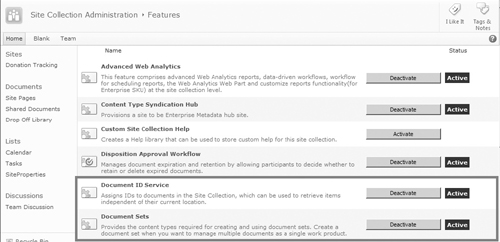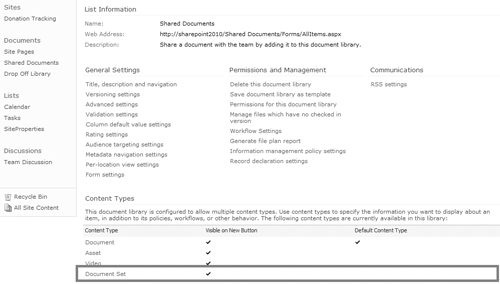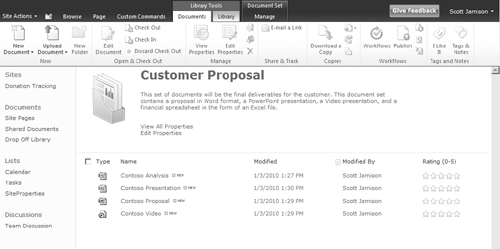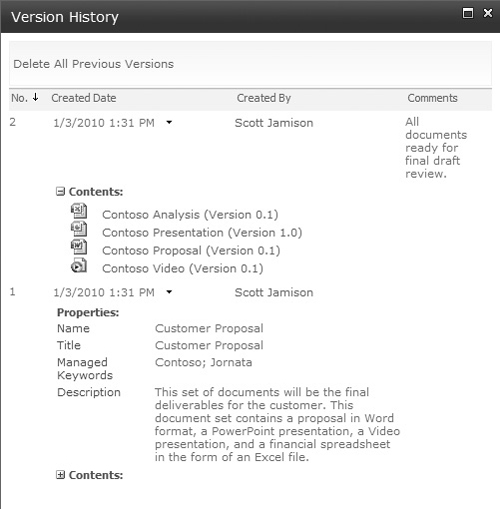4. Document Sets
A new feature in SharePoint 2010 is called Document
Sets. Using this feature, documents can be organized into a collection
of related documents that can be managed as one. In effect, document
sets are folders with which you can:
Share metadata across documents
Version the document set itself (instead of the individual documents)
Initiate workflows for the whole document set
Set permissions on the document set
Create a welcome page for the document set
Document sets are implemented as Content Types. To
enable document sets, go to Site Actions → Site Settings. Next, under
Site Collection Administration, click Manage Site Collection Features
and activate the Document Sets feature (see Figure 6). After you have the feature enabled,
you can go to the document library’s Advanced Settings page and enable
management of Content Types. Finally, add the Document Set Content Type
to the library (Figure 7).


So when do you use document sets? Mainly you want to
use document sets when you want to treat a number of documents as a
single item with common metadata, permissions, and workflow. For
example, you might be creating a proposal for a customer. This proposal
itself might be a Word document, while you’ll also deliver a PowerPoint
presentation, a video presentation, and an Excel spreadsheet for
financial analysis. In this scenario, you would probably want all of the
items to share the same metadata (customer name, opportunity ID, and so
on).
Another example of a document set is when you have a
presentation that is associated with supporting materials in
spreadsheets. Document sets allow you to keep all the related content
together and ensure that users can find documents in the context of
their “family.”
When a user navigates to a document set, she will see
information about the document set and can view and upload documents
associated with the set (see Figure 8). In addition, there is a special tab in the ribbon that appears when a user enters a document set (see Figure 9). This ribbon selection enables the user to create a version of the set (see Figure 10), start a workflow on the set, and manage permissions on the set as a whole.


